 W
WThe Nemanjić was the most prominent dynasty of Serbia in the Middle Ages. The princely, royal, and imperial house produced twelve Serbian monarchs between 1166 and 1371.
 W
WNemanjić family tree
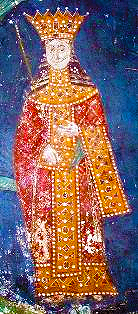 W
WAna-Neda was the Empress consort of Bulgaria briefly in 1323–1324 as the spouse of "Despot of Vidin" Michael Shishman who was elected as Emperor of Bulgaria in 1323. She was the daughter of Serbian King Stefan Uroš II Milutin and Princess Ana Terter, daughter of George I of Bulgaria. From the marriage with Michael, they had three sons, one of whom was Ivan Stephen of Bulgaria, later briefly the Emperor of Bulgaria (1330–1331).
 W
WBulevar Nemanjića, formerly Bulevar Lenjina and commonly known as Bulevar, is a street and urban neighbourhood of Niš, in southeastern Serbia. Bulevar is located in the center of Medijana municipality, bordered to the south by the boulevard (avenue) itself, to the north by the Nišava river and to the east by the neighborhood of Trošarina. Traditionally only the first row of apartment buildings south of Bulevar Nemanjića street was considered as part of the neighborhood, concretely the area of small individual family houses comprising unnamed area between Bulevar Nemanjića and other neighborhoods situated on Bulevar Zorana Đinđića.
 W
WCatherine of Hungary was the second daughter of Stephen V of Hungary and his wife Queen Elizabeth, daughter of Seyhan, chieftain of the Cumans. Catherine became Queen consort of Serbia by her marriage to Stephen Dragutin of Serbia.
 W
WStefan Konstantin was the King of Serbia from 29 October 1321 to the spring of 1322. The younger son of King Stefan Milutin (1282-1321), he initially held the appanage of Zeta, and was the heir to the Serbian throne after his father had exiled his elder brother Stefan. After his father's death, a throne struggle broke out between Konstantin, Stefan and their cousin Vladislav II, evolving into the two years long civil war. He was killed in the battle fighting his brother, who went on to defeat Vladislav, too, and gained the Serbian throne as Stefan Uroš III, better known as Stefan Dečanski.
 W
WAnna Dandolo was a Venetian noblewoman who became Queen of Serbia as the third wife of King Stefan the First-Crowned, founder of the Serbian kingdom. She was crowned with Stefan in 1217, and she held this title until his death on 24 September 1228. She was the granddaughter of Enrico Dandolo, Doge of Venice. King Stefan Uroš I was her son.
 W
WThe Dečani chrysobulls or Dečani charters are chrysobulls dating to 1321-1331, signed by Stefan Uroš III Dečanski of Serbia, the Serbian King, which contains a detailed list of households and villages in what is today Metohija and northwestern Albania.
 W
WDejan was a Serbian magnate who served Emperor Stefan Dušan as sevastokrator, and Emperor Uroš V as despot. He was married to Emperor Dušan's sister Teodora, and possessed a large province in the Kumanovo region, east of Skopska Crna Gora. It initially included the old župe (counties) of Žegligovo and Preševo. Uroš V later gave Dejan the Upper Struma river with Velbužd (Kyustendil). Dejan built the Zemen Monastery, among others, and reconstructed several church buildings throughout his province.
 W
WThe Deževa Agreement concluded in 1282 in Deževa changed the policy of the medieval Kingdom of Serbia.
 W
WDmitar Nemanjić was a Serbian Prince, the son of Vukan Nemanjić and the nephew of King Stefan II the First-Crowned. He is venerated as Saint David Nemanjić with the title of the Venerable (Prepodobni) in the Serbian Orthodox Church.
 W
WStefan Uroš IV Dušan, known as Dušan the Mighty, was the King of Serbia from 8 September 1331 and Tsar and autocrat of the Serbs and Greeks from 16 April 1346 until his death. Dušan conquered a large part of southeast Europe, becoming one of the most powerful monarchs of the era. Under Dušan's rule, Serbia was the major power in the Balkans, and an Eastern Orthodox multi-ethnic and multi-lingual empire that stretched from the Danube in the north to the Gulf of Corynth in the south, with its capital in Skopje. He enacted the constitution of the Serbian Empire, known as Dušan's Code, perhaps the most important literary work of medieval Serbia.
 W
WElizabeth of Hungary, also known as Elizabeth Árpád and Blessed Elizabeth the Widow, was an Hungarian princess member of the Árpád dynasty and Queen consort of Serbia. Since childhood, she was veiled as a nun, but she was married twice, and both times she was kidnapped by her husbands, Bohemian magnate Zavis of Falkenstein and King Stefan Uroš II Milutin of Serbia. Both husbands were in an unacceptable degree of kinship with Elizabeth from a canonical point of view: the marriage with Zavis of Falkenstein was not recognized by the Hungarian Church, and the marriage with Stefan Uroš II Milutin was not recognized by the Serbian Church. Nevertless, Elizabeth is was venerated by the Hungarian Church as Blessed, while her scandalous marriage history is almost never mentioned in the later accounts of her life.
 W
WGornje Nerodimlje is a village in the Ferizaj municipality, in southeastern Kosovo. The village was first mentioned in the Gračanica charters (1311–16) of Serbian King Stefan Milutin.
 W
WHvosno was a medieval Serbian county located in the northern part of the Metohija region, in what is today Kosovo. It roughly encompassed the areas of the modern Istok and Peć municipalities. It was surrounded by the counties of Jelci to the north; Budimlja and Plav to the west; Zatrnava to the south; Draškovina and Podrimlje to the east and southeast.
 W
WThe Life of St. Sava was the second biography of Saint Sava (1169–1236), the first Archbishop of Serbs, written by Serbian monk Teodosije the Hilandarian (1246–1328), after the first biography written in 1254 by monk Domentijan.
 W
WPrincess Milica Hrebeljanović née Nemanjić also known as Empress (Tsaritsa) Milica, was a royal consort of Serbia. Her husband was Serbian Prince Lazar and her children included despot Stefan Lazarević, and Jelena Lazarević, whose husband was Đurađ II Balšić. She is the author of "A Mother's Prayer" and a famously moving poem of mourning for her husband, My Widowhood's Bridegroom.
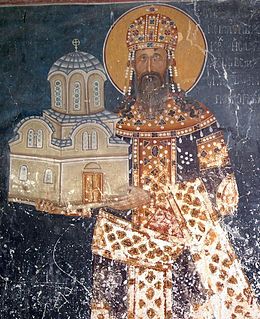 W
WStefan Uroš II Milutin, known as Stefan Milutin, was the King of Serbia between 1282–1321, a member of the Nemanjić dynasty. He was one of the most powerful rulers of Serbia in the Middle Ages. Milutin is credited with strongly resisting the efforts of Byzantine Emperor Michael VIII Palaiologos to impose Roman Catholicism on the Balkans after the Union of Lyons in 1274. During his regin, Serbian economic power grew rapidly, mostly due to the development of mining. He founded Novo Brdo, which became an internationally important silver mining site. As most of the Nemanjić monarchs, he was proclaimed a saint by the Serbian Orthodox Church with a feast day on October 30. Milutin appears in the Dante Alighieri's narrative poem Divine Comedy.
 W
WStefan Nemanja was the Grand Prince of the Serbian Grand Principality from 1166 to 1196. A member of the Vukanović dynasty, Nemanja founded the Nemanjić dynasty, and is remembered for his contributions to Serbian culture and history, founding what would evolve into the Serbian Empire, as well as the national church. According to the Serbian Academy of Sciences and Arts, Nemanja is also among the most remarkable Serbs for his literary contributions and altruistic attributes.
 W
WNemanjić Dynasty: The Birth Of The Kingdom is a Serbian historical drama television series about the Serbian medieval dynasty Nemanjići. The pilot episode aired on December 31, 2017, as a special episode for New Year's Eve, and the series premiered on Radio Television of Serbia on February 17, 2018. After broadcasting the pilot episode, critics were mostly negative, especially about the language and anachronisms used in the episode, special effects, and acting.
 W
WThe Nemanjić dynasty is depicted in a family tree composition in several specimen of Byzantine art frescoes in medieval Serbian Orthodox monasteries. The scheme is known as the Nemanjić family tree. Examples include those of Gračanica (1321), Peć, Visoki Dečani, and Matejić.
 W
WStefan Nemanjić or Stefan the First-Crowned was Grand Prince of Serbia from 1196, and the King of Serbia from 1217 until his death in 1228. He was the first Rascian king, and through his promotion of the Serbian Grand Principality into a kingdom and helping his brother Saint Sava in establishing the Serbian Church, he is regarded one of the most important of the Nemanjić dynasty.
 W
WStefan Vukanović Nemanjić was a Serbian prince, the son of Grand Prince Vukan Nemanjić and the nephew of Grand Prince and King Stefan the First-Crowned. He built the Morača monastery.
 W
WTeodora Nemanjić was the despotess of Kumanovo as the wife of Despot Dejan. She was the daughter of King Stephen Uroš III Dečanski of Serbia and her eldest half-brother was Serbian emperor, Stephen Uroš IV Dušan. She was the mother of two sons, Constantine Dragaš and Jovan Dragaš, and one daughter. She later became a nun adopting the name Evdokija, hence she is known in historiography as Teodora-Evdokija (Теодора-Евдокија).
 W
WNemanjina Street is a very important thoroughfare in downtown Belgrade, Serbia, in the Savski Venac municipality. After the completion of the construction of the Railway station in 1884, it became one of the city's main infrastructure links. The street got its name in 1896, when it was named after a Serbian ruler from the 12th century, Stefan Nemanja.
 W
WMaria Angelina Doukaina Palaiologina or Marija Angelina Nemanjić or Anna Maria Angelina Doukaina Palaiologina was the self-proclaimed basilissa of Epirus from 1384–85, succeeding the rule of her murdered husband Thomas Preljubović. Maria and her husband were a famed couple as patrons of the arts during Tomo's rule of Ioannina from 1366 to 1384. She is even portrayed in the icons.
 W
WStefan Radoslav, also known as Stephanos Doukas was the King of Serbia from 1228 to 1233.
 W
WThe Realm of Stefan Dragutin was a medieval Serb kingdom. Initially, it was a vassal kingdom of the Kingdom of Hungary, but subsequently became an independent kingdom, after the collapse of the central power in the Kingdom of Hungary. It was ruled by the Serbian kings Stefan Dragutin (1282–1316) and his son Stefan Vladislav II (1316–1325). The kingdom was centered in the region of Lower Syrmia and its first capital was Debrc, while residence of the king was later moved to Belgrade.
 W
WSaint Sava, known as the Enlightener, was a Serbian prince and Orthodox monk, the first Archbishop of the autocephalous Serbian Church, the founder of Serbian law, and a diplomat. Sava, born as Rastko, was the youngest son of Serbian Grand Prince Stefan Nemanja, and ruled the appanage of Hum briefly in 1190–92. He then left for Mount Athos, where he became a monk with the name Sava (Sabbas). At Athos he established the monastery of Hilandar, which became one of the most important cultural and religious centres of the Serbian people. In 1219 the Patriarchate exiled in Nicea recognized him as the first Serbian Archbishop, and in the same year he authored the oldest known constitution of Serbia, the Zakonopravilo nomocanon, thus securing full independence; both religious and political. Sava is regarded as the founder of Serbian medieval literature.
 W
WSaint Sava II was the third archbishop of the Serbian Orthodox Church, serving from 1263 until his death in 1271. He was the middle son of King Stefan the First-Crowned of the Nemanjić dynasty and his Byzantine wife Eudokia Angelina. He had two brothers, Stefan Radoslav and Stefan Vladislav, and a sister, Komnena. Predislav took the monastic name of Sava, after his uncle, Saint Sava, the first Serbian archbishop. The Serbian Orthodox Church celebrates him as a saint and his feast-day is 21 February.
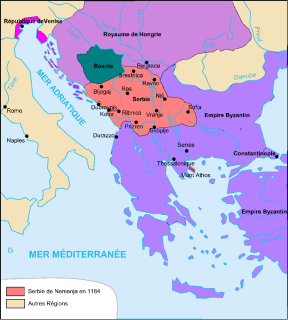 W
WGrand Principality of Serbia was a medieval Serbian state that existed from the second half of the 11th century up to 1217, when it was transformed into the Kingdom of Serbia. Initially, the Grand Principality of Serbia emerged in the historical region of Raška, and gradually expanded, during the 12th century, encompassing various neighboring regions, including territories of modern Montenegro, Herzegovina, and southern Dalmatia. It was founded by Grand Prince Vukan, who initially served as regional governor of Raška, appointed by King Constantine Bodin. During Byzantine-Serbian wars Vukan gained prominence and became self-governing ruler in inner Serbian regions. He founded the Vukanović dynasty, that ruled the Grand Principality. Through diplomatic ties with the Kingdom of Hungary, Vukan′s successors managed to retain their self-governance, while also recognizing the supreeme overlordship of the Byzantine Empire, up to 1180. Grand Prince Stefan Nemanja (1166-1196) gained full independence and united almost all Serbian lands. His son, Grand Prince Stefan was crowned King of Serbia in 1217, while his younger son Saint Sava became the first Archbishop of Serbs, in 1219.
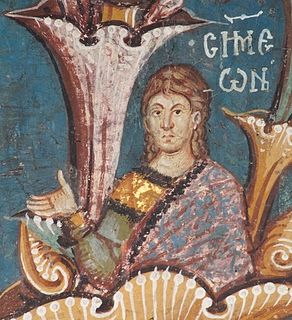 W
WSimeon Uroš, nicknamed Siniša (Синиша), was a self-proclaimed Emperor of Serbs and Greeks, from 1356 to 1370. He was son of Serbian King Stefan Dečanski and Byzantine Princess Maria Palaiologina. Initially, he was awarded the title of despot in 1346, and appointed governor of southern Epirus and Acarnania in 1347 by his half-brother, Serbian Emperor Stefan Dušan. After Dušan's death in 1355, the Serbian throne passed to Dušan's son Stefan Uroš V, but despot Simeon decided to seize the opportunity in order to impose himself as co-ruler and lord of all southern provinces of the Serbian Empire. That led him to conflict with his nephew in 1356, when Simeon started to expand his control in southern regions of the Empire, trying to take Thessaly and Macedonia. He proclaimed himself Emperor of the Serbs and Greeks, creating a separate state, centered in regions of Thessaly and Epirus, where he ruled until his death in 1370. He was succeeded by his son Jovan Uroš.
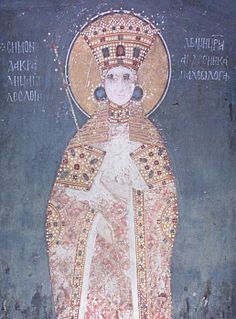 W
WSimonida Nemanjić, born Simonis Palaiologina, was a Byzantine princess and queen consort of the Kingdom of Serbia as the fourth wife of Serbian king Stefan Milutin. She was a daughter of the Byzantine Emperor Andronikos II Palaiologos and Irene of Montferrat. In Medieval Serbia Simonida is best remembered as a patron of the Arts, Music and Literature.
 W
WThe St. Stephen Chrysobull or Banjska Chrysobull was a chrysobull, charter, issued in 1314–16 by Serbian king Stefan Milutin. It was held at the Banjska monastery founded by Milutin. It is currently held at the Topkapi library in Istanbul.
 W
WThe name Stephen, long popular among Balkan monarchs, was used as an honorific or as a royal title by various rulers of Serbia and claimants to the Serbian throne, most notably the Nemanjić kings of Serbia and the Kotromanić kings of Bosnia.
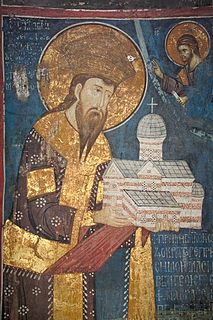 W
WStefan Uroš III Nemanjić, known as Stefan Dečanski, was the King of Serbia from 6 January 1322 to 8 September 1331. Dečanski was the son of King Stefan Milutin, and he defeated several of his family members vying for the throne. He took his epithet Dečanski from the great monastery he built at Dečani.
 W
WStefan Dragutin was King of Serbia from 1276 to 1282. From 1282, he ruled a separate kingdom which included northern Serbia, and the neighboring Hungarian banates, for which he was unofficially styled "King of Syrmia". He was the eldest son of King Stefan Uroš I of Serbia and Helen of Anjou. Dragutin married Catherine of Hungary, likely after his father concluded a peace treaty with her grandfather, Béla IV of Hungary, in 1268. By 1271, he received the title of "young king" in recognition of his right to succeed his father. He rebelled against his father, and with Hungarian assistance, forced him to abdicate in 1276.
 W
WStefan Uroš I, known as Uroš the Great was the King of Serbia from 1243 to 1276, succeeding his brother Stefan Vladislav. He was one of the most important rulers in Serbian history.
 W
WSaint Stefan Uroš V, known in historiography and folk tradition as Uroš the Weak, was the second Emperor (Tsar) of the Serbian Empire (1355–1371), and before that he was Serbian King and co-ruler with his father, Emperor Stefan Dušan.
 W
WStefan Vladislav was the King of Serbia from 1234 to 1243. He was the middle son of Stefan the First-Crowned of the Nemanjić dynasty, who ruled Serbia from 1196 to 1228. Radoslav, the eldest son of Stefan the First-Crowned, was ousted by the Serbian nobility due to increasing Epirote influence through his marriage alliance to Theodore Komnenos Doukas; Vladislav was appointed as his successor. He is celebrated as Saint Vladislav by the Serbian Orthodox Church.
 W
WJovan Uroš Nemanjić or John Ouresis Doukas Palaiologos or Joasaph of Meteora, was the ruler of Thessaly from c. 1370 to c. 1373, thereafter retiring as a monk for the nest half century. He died in 1422.
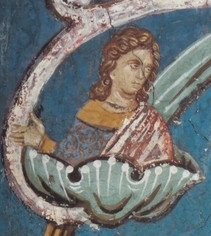 W
WUrošica was a Serbian prince and Orthodox monk, a member of the Nemanjić dynasty. He was the younger son of Stefan Dragutin, King of Serbia 1272–1282 and Syrmia 1282–1316. Dragutin kept Syrmia after passing the rule to Stefan Milutin in 1282. Through mother Catherine of the Hungarian Árpád dynasty, the elder son Stefan Vladislav II was the Duke of Slavonia from 1292 and the King of Syrmia from 1316 until 1325. Urošica took monastic vows as Stefan (Стефан), and is venerated as a saint by the Serbian Orthodox Church on November 11 [O.S. November 24].
 W
WVladislav was the King of Syrmia from 1316 to 1325, and claimant to the Serbian Kingdom.
 W
WZorica or Carica (Царица), was a Serbian princess, the daughter of King Stefan Milutin and Queen Elizabeth of Hungary. Her father planned to marry her to Charles, the son of Charles, Count of Valois, having signed an agreement in Serbia in July 1308, however, after Milutin's unsuccessful southward military operations and sabotage of the mission of the Papal legates sent into Serbia, Charles of Valois pulled out. She is depicted in frescos at Gračanica and Visoki Dečani.